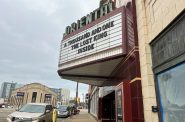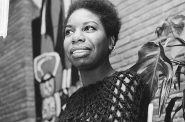“The City of Life and Death”
 The City of Life and Death is both poetic and harsh. Shot in black and white with the sound sparse and focused, the film takes place in the weeks following the 1937 invasion of China’s former capitol, Nanjing (Nanking), by Japanese forces. The Japanese army took the city in just three days, and during the three week period that followed, Japanese troops murdered some 300,000 unarmed Chinese soldiers and civilians. It is estimated that as many as 80,000 women were raped. The massacre has been named, most notoriously for American audiences in the subtitle of Iris Chang’s 1997 book The Rape of Nanking, as the “forgotten Holocaust of World War II.”
The City of Life and Death is both poetic and harsh. Shot in black and white with the sound sparse and focused, the film takes place in the weeks following the 1937 invasion of China’s former capitol, Nanjing (Nanking), by Japanese forces. The Japanese army took the city in just three days, and during the three week period that followed, Japanese troops murdered some 300,000 unarmed Chinese soldiers and civilians. It is estimated that as many as 80,000 women were raped. The massacre has been named, most notoriously for American audiences in the subtitle of Iris Chang’s 1997 book The Rape of Nanking, as the “forgotten Holocaust of World War II.”
Film director and writer, Lu Chuan, juxtaposes close-up details of human characters with long shots of marching troops and the city’s destruction. With the former technique, the victims (and enemies) of war are personalized and presented as close to us; the latter method reminds us that too often war is made abstract or one dimensional. Chuan somewhat softens the carnage in the film, which if shown as detailed in Chang’s book, would be unbearable. Somewhat surprisingly, The City of Life and Death shows Japanese forces in a humane light despite the atrocities they commit. The soldiers are shown not only as killing machines, but also as victims of a nationalistic ideology with violent means.
For young people who are coming of age during a time of economic turmoil and increasingly extremist political rhetoric, The City of Life and Death is an important film. It is a reminder that humans have gone to the darkest corners of our nature to protect, preserve, or promote our notions of ourselves and our country — and how those who we define ourselves against has been integral to such decisions.
The City of Life and Death premiered in China in 2009, grossing 150 million yuan (upward of $20 million), and will screen as part of the 2011 Milwaukee Film Festival.
The City of Life and Death will be shown at the Landmark Oriental Theatre (2230 N. Farwell Ave.) at 4:15 p.m. on Friday, Sept. 23, at the Marcus Ridge Cinema (5200 S. Moorland Rd., New Berlin) at 2:30 p.m. on Sunday, Sept. 25 and the Marcus North Shore Cinema (11700 N. Port Washington Rd., Mequon) on Thursday, Sept. 29.
https://urbanmilwaukeedial.com/2011/09/02/the-city-cyclist-which-trail-will-you-take/
Movies
-
Milwaukee Film Festival Returns in April
 Mar 27th, 2024 by Sophie Bolich
Mar 27th, 2024 by Sophie Bolich
-
Nina Simone’s Summer of Soul
 Nov 29th, 2022 by John Sieger
Nov 29th, 2022 by John Sieger
-
The Surprise Pick for Best Picture
 Mar 22nd, 2022 by Dominique Paul Noth
Mar 22nd, 2022 by Dominique Paul Noth















